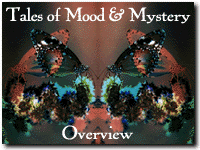 |
||||
| Mood
is the feeling an author deliberately creates through the use of language
and images, particularly in the treatment of the setting, the place or
location of the story. You can think of the mood of a piece as an effect
that the author tries to achieve through a consistent and repeated use
of similar details in describing the place and time in which the story
takes place. Think of the ever-present images of cold and snow slowly
freezing the Newcomer in To Build a Fire or the rise and fall of
the waves which threatened the shipwreck survivors in The Open Boat
from American Literary Classics. Jack London captured the numbing
feel of the cold Arctic and Stephen Crane consciously developed a wavelike
rhythm in his prose, which captured the up-down and back-and-forth movements
of the helpless lifeboat tossing in the sea. There is almost a sense of
seasickness, combined with the exhaustion and desperation of the men in
the boat.
While those stories developed a hyper-realistic sense of place, O. Henry's stories successfully captured the spirit of the times in which they took place: the Christmas setting in Jim and Della's squalid little apartment for The Gift of the Magi, strategically situated during America's Great Depression, and the nightlife in New York City in the early part of the 20th Century from The Green Door, as well as the sense of community and collaboration of Greenwich Village as it became the mecca for American artists around that same time in The Last Leaf. In Tales of Mood and Mystery, authors such as Edgar Allen Poe and Shirley Jackson make much more dramatic use of their settings: the cavernous catacombs of The Cask of Amontillado and the frantic chaos of modern New York City. |
||||
|
|
||||